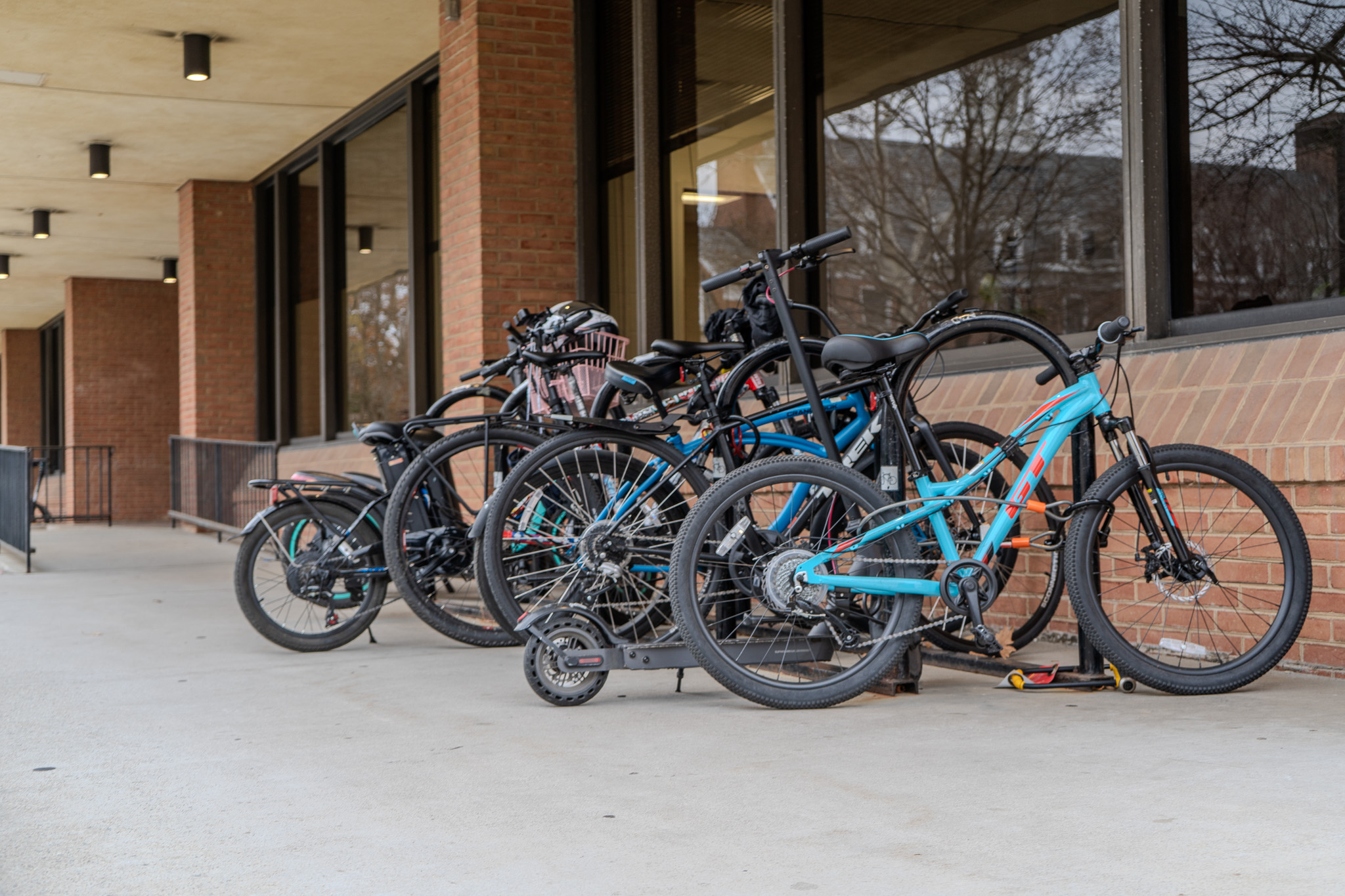Views expressed in opinion columns are the author’s own.
Although it may not seem like it sometimes, all the drivers around campus have one thing in common — they’re licensed. Whatever criticisms we may have about drivers, we can rest on the fact that these people have — at least once in their lives — demonstrated a competency to be on our roads.
Unfortunately for us pedestrians, we know all too well that micromobility users on campus are not held to the same standards when the barrier-to-entry is simply having access to a vehicle. With near-misses plaguing students’ everyday lives, we need to supplement the increased popularity of micromobility with training to ensure everybody involved is safe.
The increase in electric scooters and bikes on campus is a good and perfectly rational thing. People need to go places quickly on a very pedestrian-friendly but large campus, and these are relatively affordable and environmentally friendly alternatives to parking passes. DOTS has already decided micromobility users need to register their vehicles to avoid tickets. So why not put that data to good use and prevent potential tickets by offering a small but mandatory competency course?
Having such a course might not guarantee perfect movement across campus, but like the function of a license, it demonstrates safety, responsibility and accountability on the part of riders. Whether it be an investment into a university-specific training road or something as simple as an AlcoholEdu-esque online course, any amount of training for micromobility users is far better than the current system of literally nothing.
For newer riders, hands-on practice sessions in a controlled environment, such as an empty parking lot or closed-off street can provide a safe space to practice. Nobody’s born knowing how to safely operate an electric scooter, and there’s no reason to take for granted that such instruction has been given to students.
If that’s infeasible, a simple ELMS module with basic training instruction and certification would be a low-cost, low-effort way to ensure that, at the very least, micromobility users have credentials and easy access to resources and relevant traffic laws.
Micromobility training would be a small but worthwhile investment for the future of Terps everywhere. After all, when students graduate, it’s not like their vehicles disappear with them. Poor riding practices in cities can prove to be even more dangerous than those at the University of Maryland. Unsafe and illegal riding practices are linked to a lack of awareness. Inexperience and a lack of awareness on the road can get you hurt, but mandated training sets micromobility users up for success here and beyond.
Tangentially, the haphazard parking of these vehicles often impedes pedestrian walkways. These parking habits directly worsen the quality of life for students with disabilities. We can’t stand by and let the negligence from such an easily preventable problem continue to hurt our community members every day.
While DOTS is working on signs to prevent this behavior, that approach simply attacks a symptom rather than the underlying problem. It implies that the burden of safe travel on campus rests on pedestrians who should accommodate people on scooters, bikes and skateboards when it should be the other way around. Those who have opted for micromobility should simply know the rules and etiquette of the road. A course would increase accessibility on campus and make even the most experienced riders realize their peers are affected by their shoddy parking jobs.
Students should be leaving the university better than when they got here. That prerogative includes life skills and the transportation measures that come with them.
While some may contend that such a mandate might disincentivize people from using these better modes of transportation, the truth is that if people don’t want to learn about the rules of the road, we probably shouldn’t be letting them operate vehicles. The horror anecdotes of broken legs and twisted ankles from rental scooters on campus are prime examples of people who probably won’t ever get back on one.
Instead, providing adequate training sessions might inspire confidence in people who have wanted to invest in personal micromobility but don’t have the guidance or structure to do so.
Increased micromobility on campus is good, but an increase in qualified micromobility use is magnitudes better and — most importantly — doesn’t come at the expense of others. We should all be able to walk and ride across campus in harmony and without looking over our shoulders every 30 seconds. Just a few hours of mandatory training would go a long way in protecting all us Terps from impounds, crashes and walkway impediments. It’s time to enhance the benefits of micromobility on campus with compulsory training.
Rohin Mishra is a senior economics and government and politics major. He can be reached at rohinpmishra@gmail.com.



